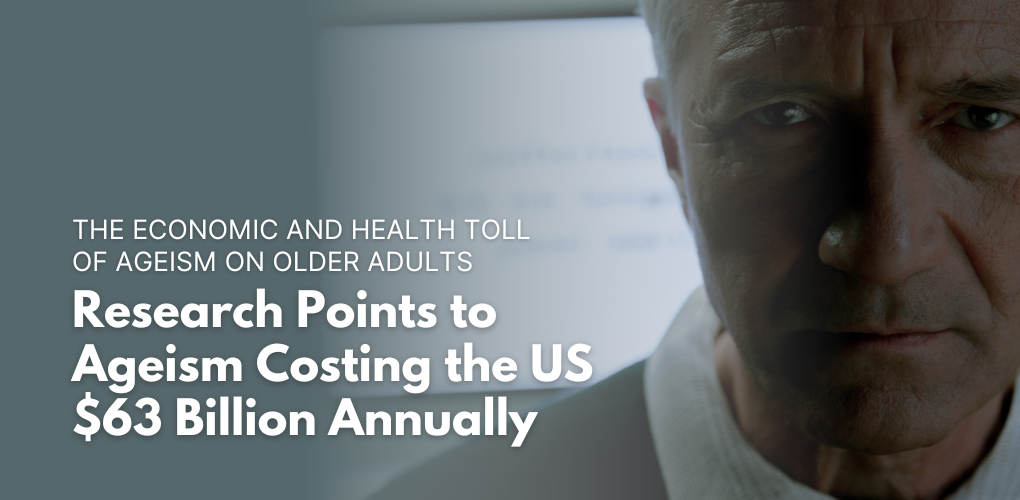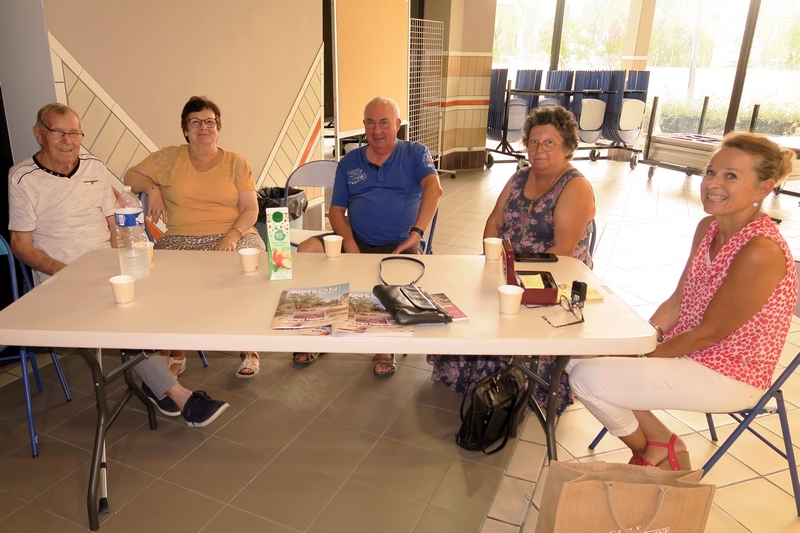Is Age Just A Number? A Critical Examination Of Ageism And Longevity

Table of Contents
The Societal Impact of Ageism: How Negative Stereotypes Shape Perceptions
Ageism manifests in various subtle and overt ways, significantly impacting the lives of older adults. Negative stereotypes—often perpetuated unconsciously—shape how society views and treats its aging population. This age discrimination creates barriers to full participation in all aspects of life.
- Employment Opportunities: Ageist attitudes often lead to age discrimination in hiring, promotion, and even training opportunities. Older workers are frequently perceived as less adaptable, less technologically proficient, and less productive, leading to forced early retirement and reduced income.
- Social Interactions: Ageist stereotypes can lead to social isolation and exclusion. Older adults may be overlooked in social settings, their opinions undervalued, and their contributions dismissed. This can have a profound impact on mental well-being.
- Healthcare Access: Ageism in healthcare can manifest as inadequate access to appropriate care, insufficient attention to the specific health needs of older adults, and even assumptions about their capacity for self-care.
Common ageist stereotypes include portraying older adults as "slow," "outdated," "technologically inept," "burden," or "grumpy." These harmful stereotypes contribute to decreased self-esteem, increased stress, and even depression among older adults. Statistics show a clear link between age discrimination and poorer mental and physical health outcomes, alongside significant economic consequences like decreased income and poverty in later life. The societal impact of ageism extends beyond the individual, affecting families and communities. Effective elder care requires challenging these ingrained biases and creating supportive environments.
Longevity and its Implications: Redefining "Old Age" and Embracing Active Aging
The increasing average lifespan and significant shifts in demographics worldwide are reshaping our understanding of "old age." Life expectancy is rising, and the proportion of older adults in the global population is growing rapidly. This presents both challenges and opportunities. The concept of "active aging" is gaining traction, emphasizing the importance of maintaining physical and mental well-being throughout later life.
- Health Benefits of Active Aging: Engaging in regular physical activity, maintaining a balanced diet, and actively managing chronic conditions all contribute to improved physical and cognitive function in later life. This leads to a higher quality of life and reduces the risk of age-related diseases.
- Social Benefits of Active Aging: Staying socially connected through family, friends, and community involvement combats social isolation and promotes mental well-being. Volunteering, pursuing hobbies, and engaging in lifelong learning provide social stimulation and a sense of purpose.
- Economic Contributions of Active Aging: Older adults continue to make significant economic contributions through volunteering, mentorship, and even continued employment in various sectors. Their experience and wisdom remain invaluable assets.
These demographic shifts require a re-evaluation of our societal structures and expectations. Successful aging involves proactively embracing active lifestyles, fostering social connections, and recognizing the continued contributions of older adults to society. It's about maximizing healthspan (the period of life spent in good health) and extending the years of healthy, active living.
Combating Ageism: Strategies for Promoting Inclusivity and Respect for All Ages
Combating ageism requires a multi-pronged approach, encompassing education, policy changes, and community-level initiatives.
- Education and Awareness Campaigns: Public awareness campaigns that challenge ageist stereotypes and promote positive portrayals of aging are crucial in shifting societal attitudes. This includes highlighting the diversity of experiences within the older adult population and showcasing their ongoing contributions.
- Policy Changes: Strengthening age discrimination laws, ensuring access to affordable healthcare and elder care services, and implementing policies that support older workers are essential steps.
- Promoting Intergenerational Programs: Intergenerational programs that bring together people of different age groups foster mutual understanding, challenge stereotypes, and create age-inclusive communities.
- Highlighting Positive Contributions: Promoting the positive contributions of older adults in various fields, from technology to the arts, combats the negative stereotypes that often overshadow their accomplishments.
Creating age-friendly communities requires a collaborative effort, with stakeholders from government, healthcare providers, businesses, and community organizations all working together. Age inclusion benefits everyone.
The Role of Technology in Extending Healthy Lifespans
Technological advancements play a significant role in extending both lifespan and healthspan.
- Assistive Technologies: Assistive technologies, such as hearing aids, mobility aids, and smart home devices, improve the quality of life for older adults by mitigating age-related challenges and promoting independence.
- Medical Advancements: Medical breakthroughs, such as new treatments for age-related diseases and improved diagnostic tools, contribute to increased lifespan and improve the overall health of older adults.
- Technological Solutions for Social Isolation: Telehealth and other technological solutions help combat social isolation, a major issue for many older adults, by connecting them with loved ones, healthcare providers, and community resources.
Digital health is transforming elder care and enabling older adults to age in place with greater comfort and independence. The potential of technology to enhance longevity and quality of life is vast.
Is Age Just a Number? A Call to Action for an Age-Inclusive Future
Ageism is a pervasive issue with significant societal impacts, yet increased longevity offers opportunities for active and fulfilling lives. Challenging ageist attitudes and creating age-inclusive environments are essential for realizing the potential of an aging population. We need to move beyond viewing age as a marker of decline and instead embrace the diversity and experience that older adults bring to our communities. Let's work together to ensure that age is truly just a number, celebrating longevity and promoting an age-inclusive future where every individual, regardless of age, can thrive. Join the movement to combat ageism and advocate for policies that support the well-being of older adults, ensuring a brighter, more equitable future for all.

Featured Posts
-
 Police Complaint To Ofcom Examining The Chris Kaba Panorama Documentary
May 01, 2025
Police Complaint To Ofcom Examining The Chris Kaba Panorama Documentary
May 01, 2025 -
 The Ukraine Wars Effect On Global Military Spending Europes Increased Defense Budgets
May 01, 2025
The Ukraine Wars Effect On Global Military Spending Europes Increased Defense Budgets
May 01, 2025 -
 Celtics Vs Cavaliers Predictions Expert Picks And Betting Odds For Friday
May 01, 2025
Celtics Vs Cavaliers Predictions Expert Picks And Betting Odds For Friday
May 01, 2025 -
 Levenslang Voor Fouad L Waarom Geen Tbs Bij De Erasmusschutter
May 01, 2025
Levenslang Voor Fouad L Waarom Geen Tbs Bij De Erasmusschutter
May 01, 2025 -
 Bangladesh Nrcs Demand For Action Against Anti Muslim Violence
May 01, 2025
Bangladesh Nrcs Demand For Action Against Anti Muslim Violence
May 01, 2025
Latest Posts
-
 Solutions Numeriques Pour Un The Dansant Reussi
May 02, 2025
Solutions Numeriques Pour Un The Dansant Reussi
May 02, 2025 -
 Optimiser Ses Thes Dansants Avec L Accompagnement Numerique
May 02, 2025
Optimiser Ses Thes Dansants Avec L Accompagnement Numerique
May 02, 2025 -
 Nikki Burdine Departs Wkrn News 2 Morning Show After Seven Years
May 02, 2025
Nikki Burdine Departs Wkrn News 2 Morning Show After Seven Years
May 02, 2025 -
 Thes Dansants Reussir Son Evenement Grace Au Numerique
May 02, 2025
Thes Dansants Reussir Son Evenement Grace Au Numerique
May 02, 2025 -
 L Accompagnement Numerique Au Service De Vos Thes Dansants
May 02, 2025
L Accompagnement Numerique Au Service De Vos Thes Dansants
May 02, 2025
